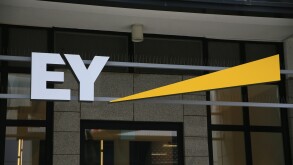
|

|
Jim Fuller |
David Forst |
The US Tax Court decision in Amazon.com Inc. v. Commissioner, 148 T.C. No. 8 (2017), is another in a line of cases where the court applied US transfer pricing law in a straightforward manner and rejected the Internal Revenue Service's (IRS) aggressive and unfounded interpretations of the very law that it wrote. It has important ramifications for both outbound and inbound taxpayers, with the focus here being inbound.
The IRS claimed that Amazon undervalued the buy-in intangibles contributed to a Luxembourg subsidiary by more than $3 billion when it entered into a cost share arrangement (CSA) with its Luxembourg subsidiary.
One issue that receives much attention in both the outbound and inbound contexts is aggregation, where the IRS attempts to lump together different types of intangibles and non-intangibles into a single constructed transaction to drive a higher value. The US Income Tax Regulations permit aggregation only if it produces the "most reliable" measure of an arm's-length result. The Tax Court, as in prior cases, rejected the IRS's aggregation argument. It stated that the type of aggregation proposed does not yield a reasonable means, much less the most reliable means, of determining an arm's-length buy-in payment for at least two reasons. First, it improperly aggregates pre-existing intangibles (which are subject to the buy-in payment) and subsequently developed intangibles (which are not). Second, it improperly aggregates compensable intangibles (such as software programs and trademarks) and residual business assets (such as workforce in place and growth options) that do not constitute pre-existing intangible property. The Tax Court also stated that by definition, compensation for subsequently developed intangible property is not covered by the buy-in payment. Rather, it is covered by future cost sharing payments.
The IRS also aggressively argues that intangibles have very long, if not perpetual, lives. They can affect inbound taxpayers who, for example, acquire a US company and then migrate some or all of the acquired IP outbound. The Tax Court stated that it is unreasonable to determine the buy-in payment of such items as trademarks, brand names and other marketing intangibles by assuming that a third party, acting at arm's length, would pay royalties in perpetuity for the use of short-lived assets. Further, Amazon's experts testified that a substantial portion of source code remaining after six years is dormant or commoditised. The court held that the evidence clearly establishes that Amazon's website technology did not have a perpetual or indefinite useful life. The court concluded that Amazon's website technology, ignoring the tail, had on average a useful life of seven years.
The IRS contended that Amazon US had a realistic alternative available to it, namely, continued ownership of all the intangibles in the US. The Tax Court stated that it found this argument unpersuasive for many reasons. One principal reason was that the regulation enunciating the realistic alternatives principle also states that the IRS "will evaluate the results of a transaction as actually structured by the taxpayer unless its structure lacks economic substance" (Treas. Reg. § 1.482-1(f)(2)(ii)(A)). Thus, even where a realistic alternative exists, the Commissioner will not restructure the transaction as if the alternative had been adopted by the taxpayer, so long as the taxpayer's actual structure has economic substance. The Tax Court's statement is an important affirmation of this basic and long-standing principle, and one that is increasingly at odds with BEPS-inspired changes to transfer pricing rules as we have covered in a previous column.
Jim Fuller (jpfuller@fenwick.com) and David Forst (dforst@fenwick.com)
Fenwick & West
Website: www.fenwick.com










